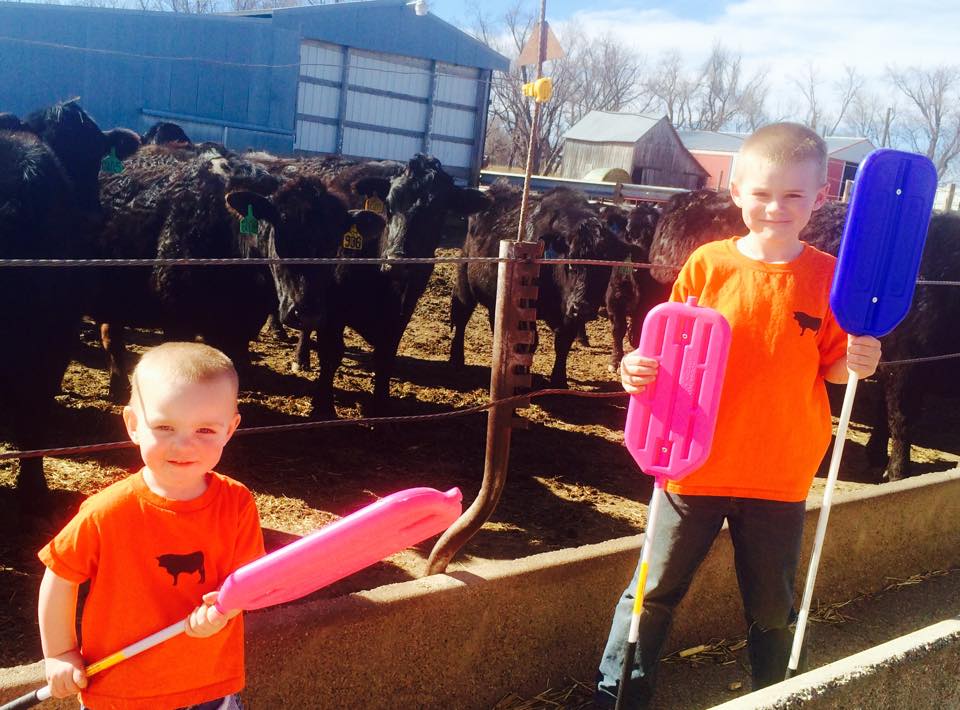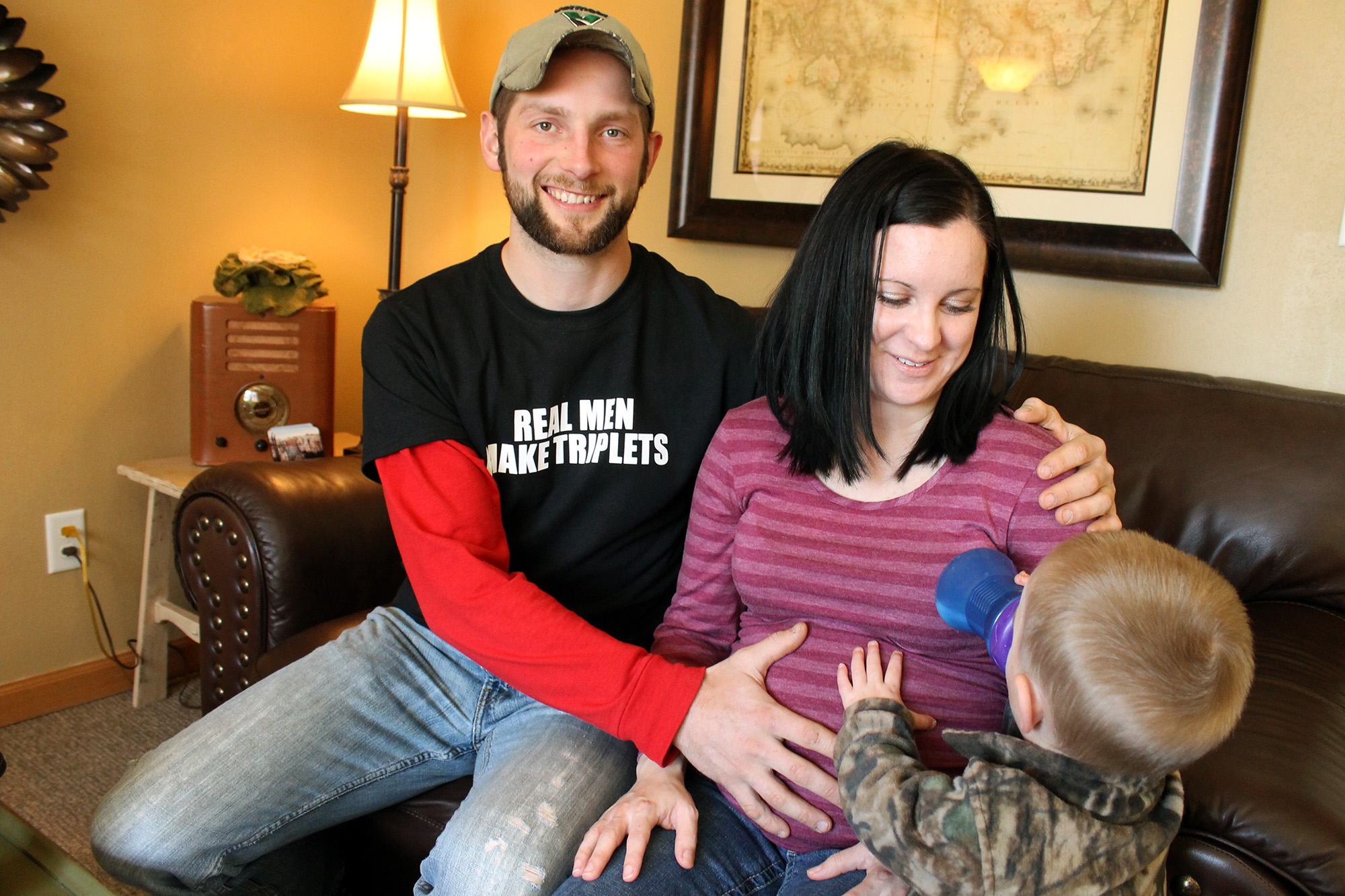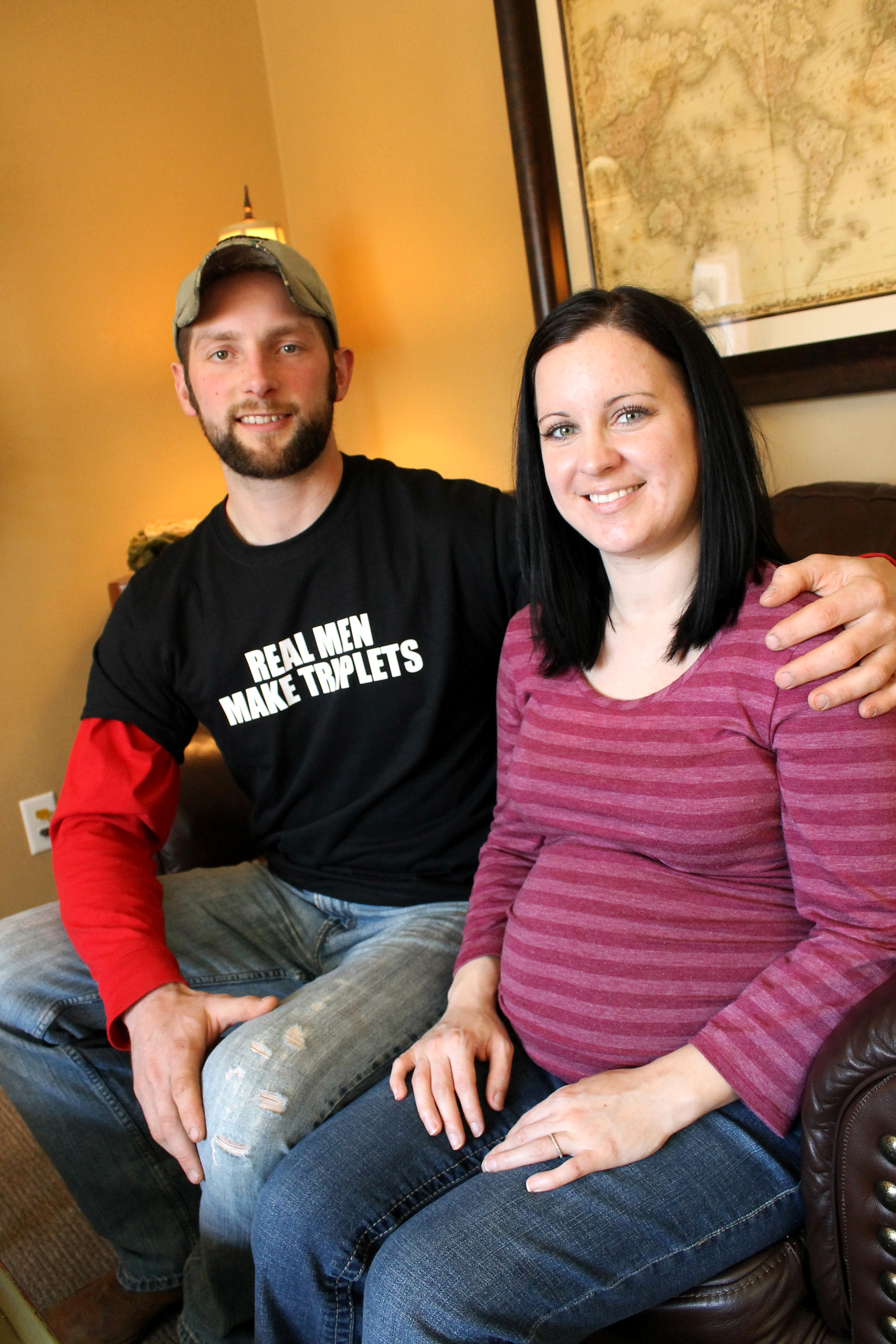 ,
,  ,
,  ,
,  ,
, 
On Sunday millions of women will be showered with gifts and words of appreciation.
Mother’s Day will take on a triple meaning this year for the Anthony and Megan Boyenga household in Kanaranzi Township.
The young couple learned in early February that they were expecting their third child — as well as the fourth and fifth.
“We never, ever thought of having triplets,” Megan said. “We braced ourselves for twins possibly.”
With the sudden expansion of their household, (the couple has two boys, Rayden, 7, and Coyer, almost 2), the Boyengas have set up a Facebook page to update friends and family on the triplets’ progress.
The periodic updates save the couple from repeating basic details.
Titled “Boyenga Triplets,” the site has garnered 325 likes so far.
“The more support you have, the better,” Anthony said.
Having the site has alleviated some of Megan’s anxiety of being a mother to three babies all at once.
“I was terrified,” she admitted. “How am I going to do this?”
Newman triplets turn 16
To answer some of Megan’s questions, the Star Herald reached out to Luverne native Gina (Jarchow) Newman, who with her husband, Rob, is a mother of triplets. The three girls turn 16 this fall.
“It has been a blessing having three girls the same age,” she said. “They are good friends and don’t often fight.”
Gina easily passed on tips she learned being a first-time parent in 1999.
“We tried to plan ahead for some things, borrowed what we could rather than purchase all the big ticket items, and tried to just go with whatever was thrown at us,” she said.
Support from friends and family members helped the Newmans get through the first few months, adjusting to three infants. Managing three children of the same age was easier once the girls became toddlers.
“To get out of the house, we would go swimming, play in parks, or find a lake where the girls could explore and throw rocks in the water,” Gina said. “It doesn’t have to cost a lot to entertain toddlers.”
Living on the farm near Wilmont, the girls were given chores as they grew older, and they celebrated birthdays and holidays with each receiving approximately the same amount — to an extent.
“Everyone asks us if they will each get their own car (as they turn 16),” Gina said.
The answer is no.
The girls will figure out how to share one vehicle.
“There’s always an old farm pickup that someone can drive if they can’t figure it out,” she said.
The Boyengas are anticipating their triplets’ arrival July 1. Driving is a long way in the future for their boy and two girls.
Picking out names will be the Boyengas’ first order of business and the Newmans recommend not rhyming or starting their first names with the same letter.
Her triplets, Jamie, Brianna and Kelly, agree, and in an email the trio answered questions about what it is like being a triplet.
“Many people actually don’t believe us or they are just shocked,” was one remark about being triplets.
They also heard a wide range of comments, but the most frequent has been, “It must be cool being a triplet!” and “Wow, that’s so weird.”
Brianna, Kelly and Jamie are adamant about one aspect of being a trio.
“Even if you meet twins or other multiples, treat them as individuals and don’t always group them with their siblings, even if it’s easier that way. Please, learn their separate names rather than ‘Triplet No. 1, 2 and 3.”
The Newman girls, now freshmen at Worthington High School, say they are very close and always help each other with homework and general advice.
“You are never alone,” they shared. “You always have someone else your age to talk to and be around.”
Together Kelly, Jamie and Brianna indicated they would celebrate Mother’s Day, one that brings three times the joy to mom Gina with “breakfast in bed and a trio of handmade cards.”
Triplet births in the U.S.
at less than 1 percent
The odds of a woman giving birth to triplets are one in thousand, according to reproductive endocrinologist Dr. Keith Hansen with Sanford Hospital in Sioux Falls.
“Triplets are a lot more common with fertility medications,” he said.
The use of Clomid, which helps with female ovulation, raises the chance of triplets to 10 percent, Hansen said. Other fertility drugs increase the chance of triplets to 30-40 percent.
Megan Boyenga said she took Clomid after she was diagnosed with polycystic ovarian syndrome to help with the birth of her second child.
Procedures such as in-vitro fertilization (IVF), a procedure utilized for the Newman triplets, rarely results in more than twins.
Industry standards now use no more than two embryos for an IVF procedure, Hansen said.
In the United States, there were 4,364 triplet births in 2013, according to the latest data available from the Centers for Disease Control and Prevention (CDC) website.
The number of twin births was 132,324, also in 2013.
Multiple births have dropped dramatically from the peak in 1998. Since 2004, the average annual declines have been more than 4 percent, the CDC indicated.


